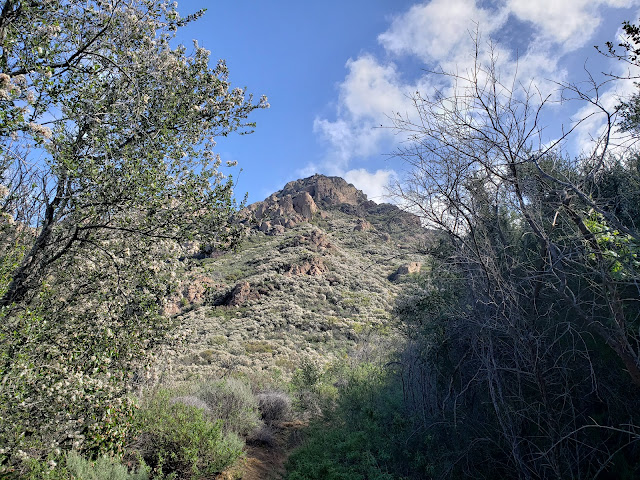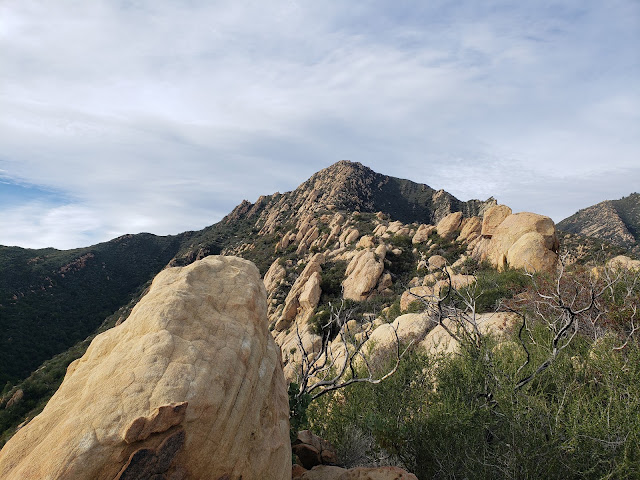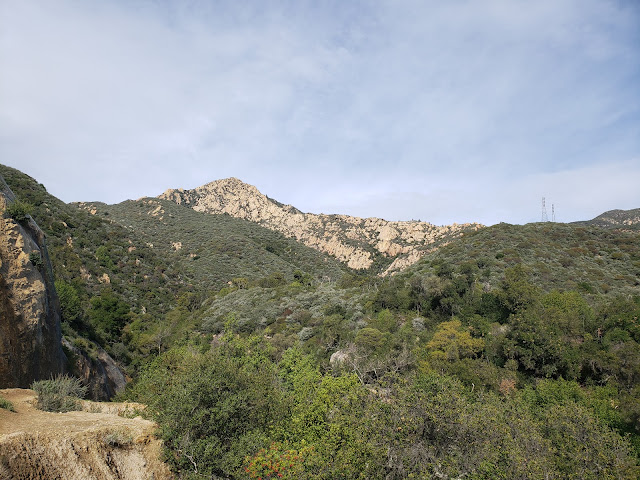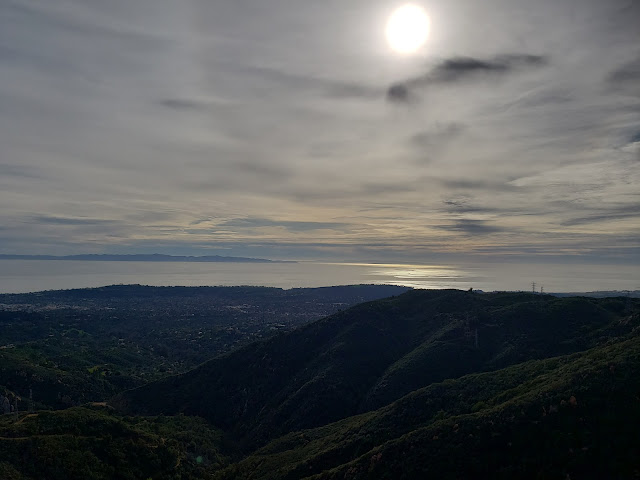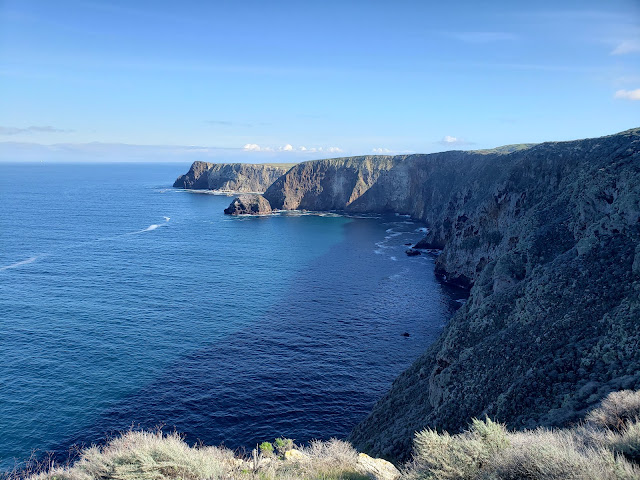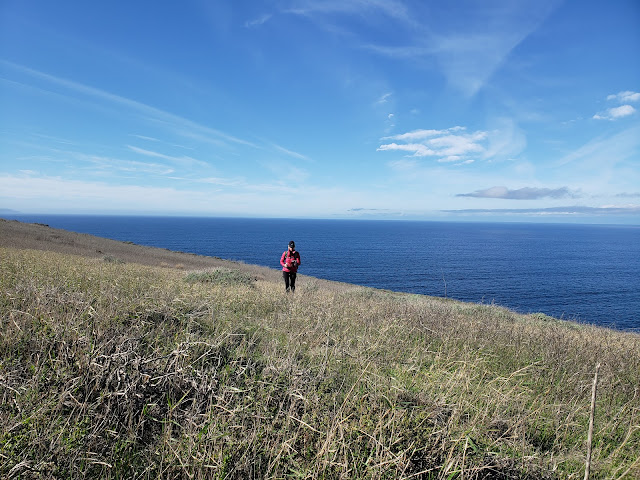Just beyond the creek crossing, the Old Cabin Trail folds back onto itself like a protein molecule and begins climbing out of the cool green of Upper Sycamore Canyon. It’s a gorgeous winter morning so the trail is crowded, but the overwhelming majority of the hikers don’t make this hairpin turn. They don’t have much interest in what’s up the hill. They’re only here for the ephemeral waterfall that feeds the creek. A curiosity in this hyper-arid landscape to be certain. I’ve seen it myself. So the conga line continues in a straight trajectory toward the base of the falls just up canyon. I make the hard right and start ascending. Immediately the hordes fall away and I’m alone on the trail. As I prefer.
I realize that might sound anti-social. I’m also aware of the potential danger of a solitary outing. I’m following in the footsteps of 22 year-old Zachary Zernick whose story is fresh on my mind. Zachary walked this exact same trail the week prior and never returned home. Search and Rescue found his body at the base of cliff where he is believed to have accidentally fallen to his death. It’s obviously sad and tragic that this kid was struck down before his life really even began. But I’d like to believe that Zachary knew and understood the risks of going it alone before he ever went out. Hopefully I’m not wrong about that, but most folks who have spent any appreciable amount of time hiking solo do. That doesn’t mean they have a death wish. Or that they are presumptively negligent. They simply accept, even if society doesn’t, that inherent risk of death or injury is the price of admission for a bit of solitude.
The trail is wonderfully damp and cool as I climb. A slight coastal breeze blows up canyon. That is not the typical experience. This is sharp and inhospitable country. For a good portion of the year, these hillsides are a tangle of thorny, skeletal chaparral. When the heat is up, the plant life here falls into a quiet dormancy. Leaves curl up, flower petals wither, and seeds drop to the ground in anticipation of the wet season to hopefully come. Muted olive, sandstone, slate, and rust, the favored palette of homeowners' associations everywhere, predominate. But when the winter months arrive with rain, the landscape transforms into something very different. The thirsty flora suddenly explodes in what John Muir called a “shaggy exuberance.” Soft green California Sage and its aromatic Black cousin spring to life. Orangey California poppies start popping. Chaparral Bush Mallow blooms a gorgeous pink and peach. Giant Coresopsis, which looks like a meth-addled minx ten months out of the year, unexpectedly becomes a beautiful and seductive temptress. It’s a super-bloom of visual and olfactory magnificence.
I pass a few pairs of hikers on their way down and nod to them as we file past each other. I do this instinctively and robotically because they’re just background noise. I see them, I am aware of their presence, but I filter them out. I’m too mesmerized by my natural surroundings to be concerned with social engagement and pleasantries. I have that every day. I’m here for escape from that. And escape I shall.
A short distance further, the trail levels out and splits. The left branch descends to the old Danielson cabin site and memorial. The right fork continues to climb to the junction with the Old Boney Trail. Most folks that come this way turn left. I tack right and keep climbing through tunnels of California lilac that are humming with ravenous hornets and honey bees. I’ve arrived at a détente of sorts with these buzzing arthropods. I don’t interfere with their day-drinking of nectar and they don’t sting the shit out of me. It’s a fair accommodation that works reasonably well for both of us. One day, I hope to arrive at a similar understanding with ticks.
A half mile later, I hit the crest just below Pt. 1,918 where the path levels briefly. A short use trail here puts you on the high-point before continuing as the Western Ridge Trail to the summit of Tri-Peaks. The news reports don’t say, but my suspicion is that this was Zachary Zernik’s chosen path. I’ve been to Pt. 1,918 several times previously so don’t feel compelled to do it again. Instead, I commit to explore the Old Boney Trail as it descends the southern flanks of Sycamore Canyon.
The climbing is done for now and as I continue west, I begin to give back some of the elevation I just gained. That means the walking is easy here and I’m able to move quickly as I descend to the junction with the Fossil Trail. Along the way, I get really nice looks at Sycamore Canyon, Mugu Peak, and the Oxnard Plain. I even get a peek-a-boo view of the Channel Islands. I pass a couple along this stretch and catch another, older couple where the Old Boney and the Fossil Trails intersect.
By its evocative name, the Fossil Trail sounds like a compelling and exciting romp. One immediately imagines coming upon the fossilized remains of all sorts of prehistoric creatures large and small. The reality is something significantly more mundane. The namesake fossils comprise a handful of shells embedded in a short rocky section in the middle of the trail. It’s cool. It’s just not spectacular by any measure. The promise is over-sold.
I’ve never been beyond this point on the Old Boney Trail so ask the couple whether they are familiar with what lies ahead. They eye me suspiciously, grunt that they are taking the Fossil Trail, and then turn away to filter me out. I suppose I deserve it. They’re apparently not here for social engagement and pleasantries either.
So I take the plunge and continue west to see what there is to see. The “plunge” metaphor here is appropriate in that the trail is somewhat overgrown and I find myself pushing through a bit of brush. This stretch of Old Boney clearly doesn’t see the same traffic as other sections of the trail and the native flora is taking advantage. But the brush begins to cede ground again when the trail tops out on a low ridge that begins a mellow descent to the Backbone Trail. From this point forward, it’s a pleasant downhill stroll.
Now the land feels wild and remote. I can no longer see Sycamore Canyon. It isn’t that far away, but it’s out of view, behind a larger ridge to the north. It may as well be a million miles away. To the immediate south is the sandstone escarpment of Boney Mountain and the Tri Peaks. And I’m alone on the trail. The only sound is the crunch of my feet on the path. There is no other noise to filter. Silence and solitude sit heavy on the landscape.
So does the thrum. That enigmatic and palpable trembling of the universe that rings in your ears and vibrates your soul. A subtle reminder that ultimate reality is very different than you imagine. I can’t hear the hum today, but I can feel it. Lurking beneath the silence in quivering anticipation. I embrace the rhythm and allow my personal waves to align with those around me. In the world of physics, they call that constructive interference and it results in wave amplification. I ride the amplified waves all the way to the junction with the Backbone Trail where California Poppies are starting to bloom. It’s such a stunningly beautiful sight that I prostrate myself on the trail for a bug’s compound-eye view.
It hasn’t rained for weeks, but remarkably the water is still flowing down the unnamed drainage leading to the Danielson Group Camp. In all the years I’ve walked these hills, I never recall seeing conditions like this. But as I continue down the canyon, the reason becomes evident. The placid little stream that is currently making things so enjoyable must have been an angry torrent just weeks prior. The bottomlands are clogged with flood debris and large swaths of the trail have been obliterated. Route-finding isn’t terribly difficult, but I suspect it will be some time before he trail proper is restored to its former self.
At Danielson I sit at one of the many empty picnic tables to gear up for the long walk up the ribbon of asphalt that is colloquially known as the Black Bitch. A boisterous flock of feral Nanday Parakeets keeps me company. It sounds exotic I know. And it is if you’re using the term “exotic” as a pejorative. These bright-green birds don’t belong here. They’re invaders who have escaped captivity and are now procreating with the zeal of fecund Catholic couples who believe that birth control is sinful. As a result, these pretty birds from the interior jungles of South America are a noisy thing in the Mediterranean environment of the Santa Monica Mountains.
I’m back with people as I begin my walk out. The thrum has gone mute. Or maybe it has just been forcibly drowned out by the white noise of hikers, bikers, and the occasional park ranger pick-up truck. Either way, no amount of filtering can change that dynamic. I accept that. Even welcome it. Because if the quivering of the universe was commonplace, it would be neither mysterious nor magical. Solitary treks to seldomly-visited places in search of it wouldn’t be so lustrous. I’m a selfish bastard that wants to hold onto that. So here, in the designated white noise zone, I’m quite accepting of the heterogeneous mixture of chatter, commotion, and hubbub. As long as the contagion doesn’t spread to become a white noise pandemic that murders the élan vitale, I can still trod these trails in the pursuit of awe.





